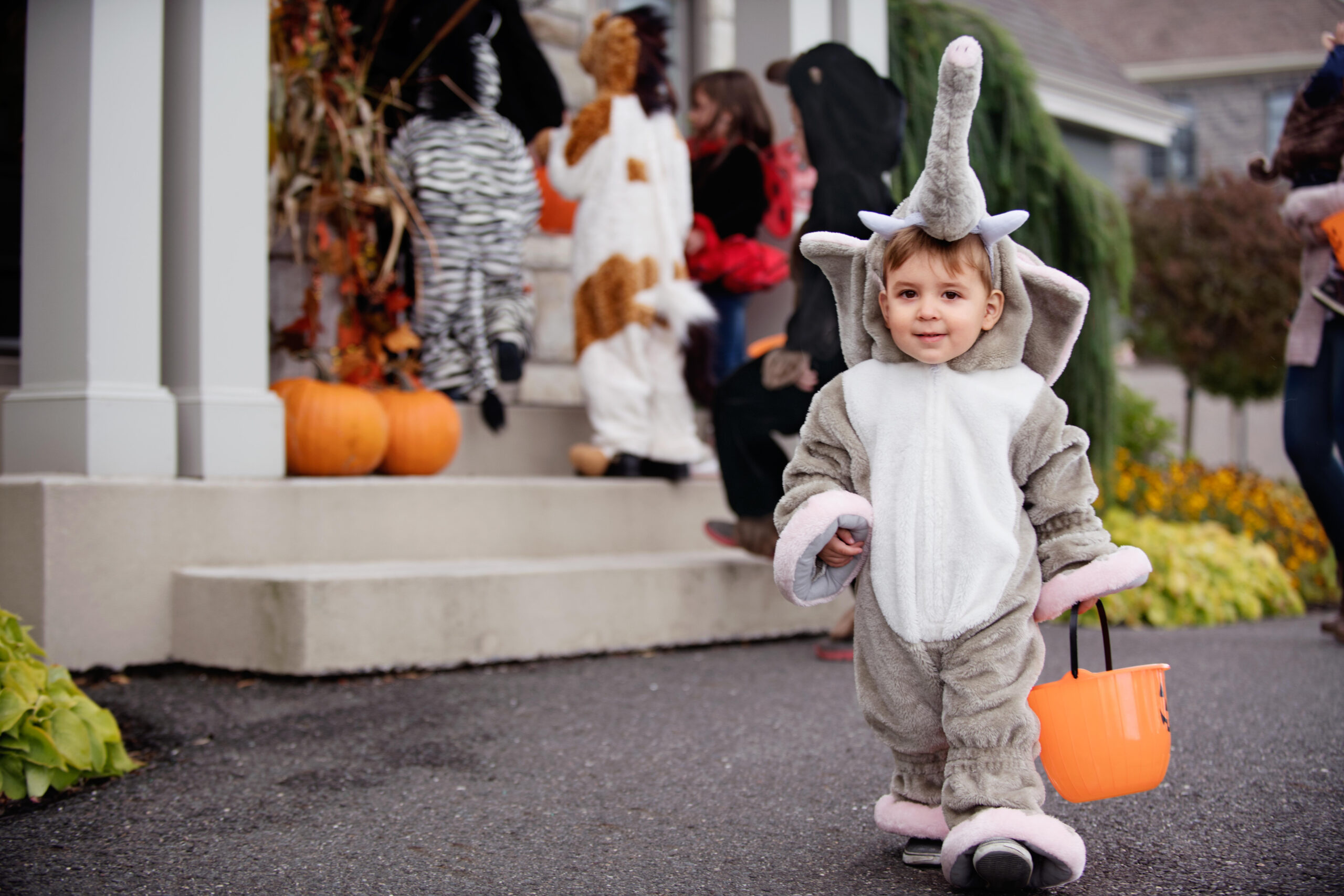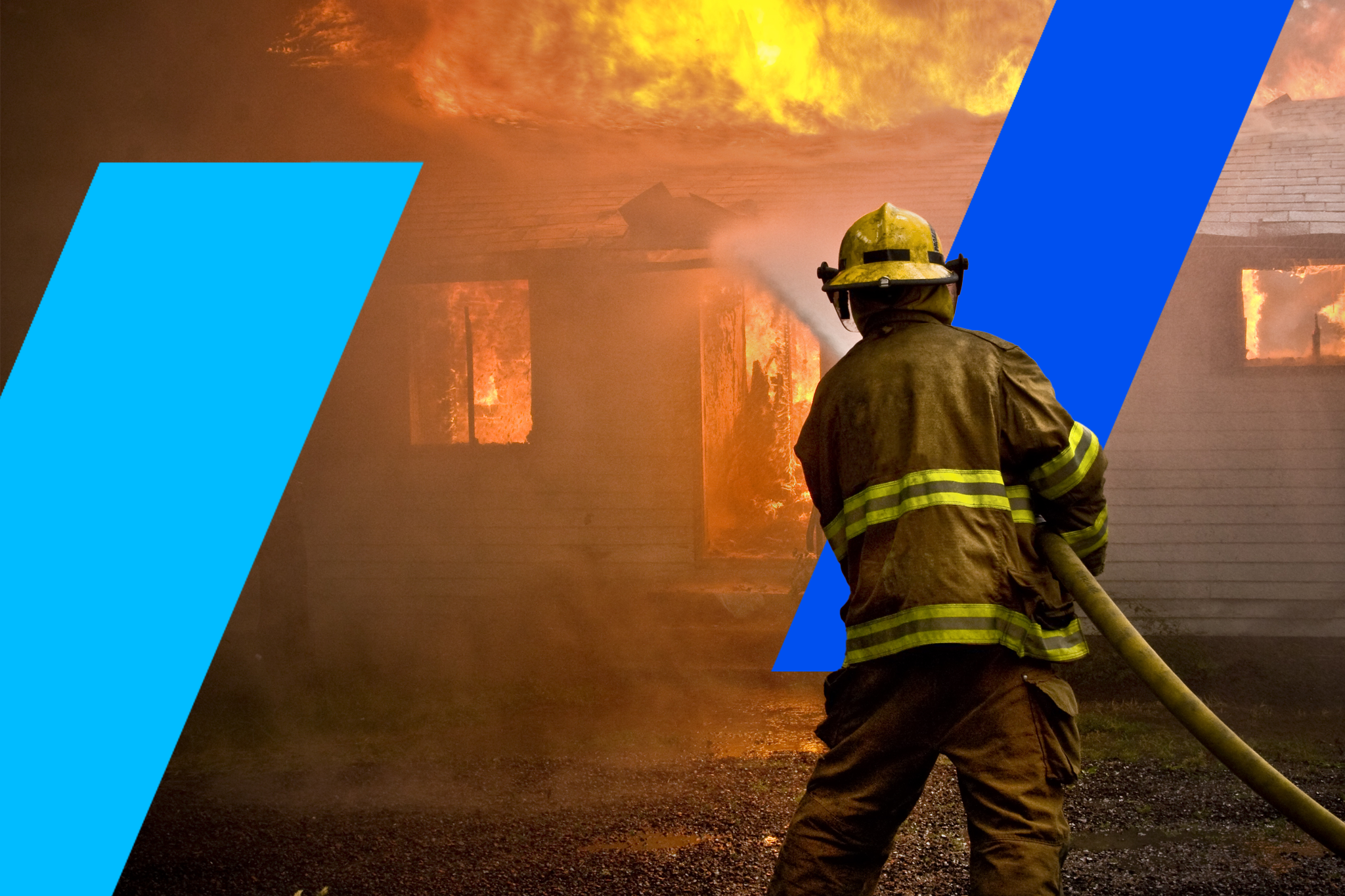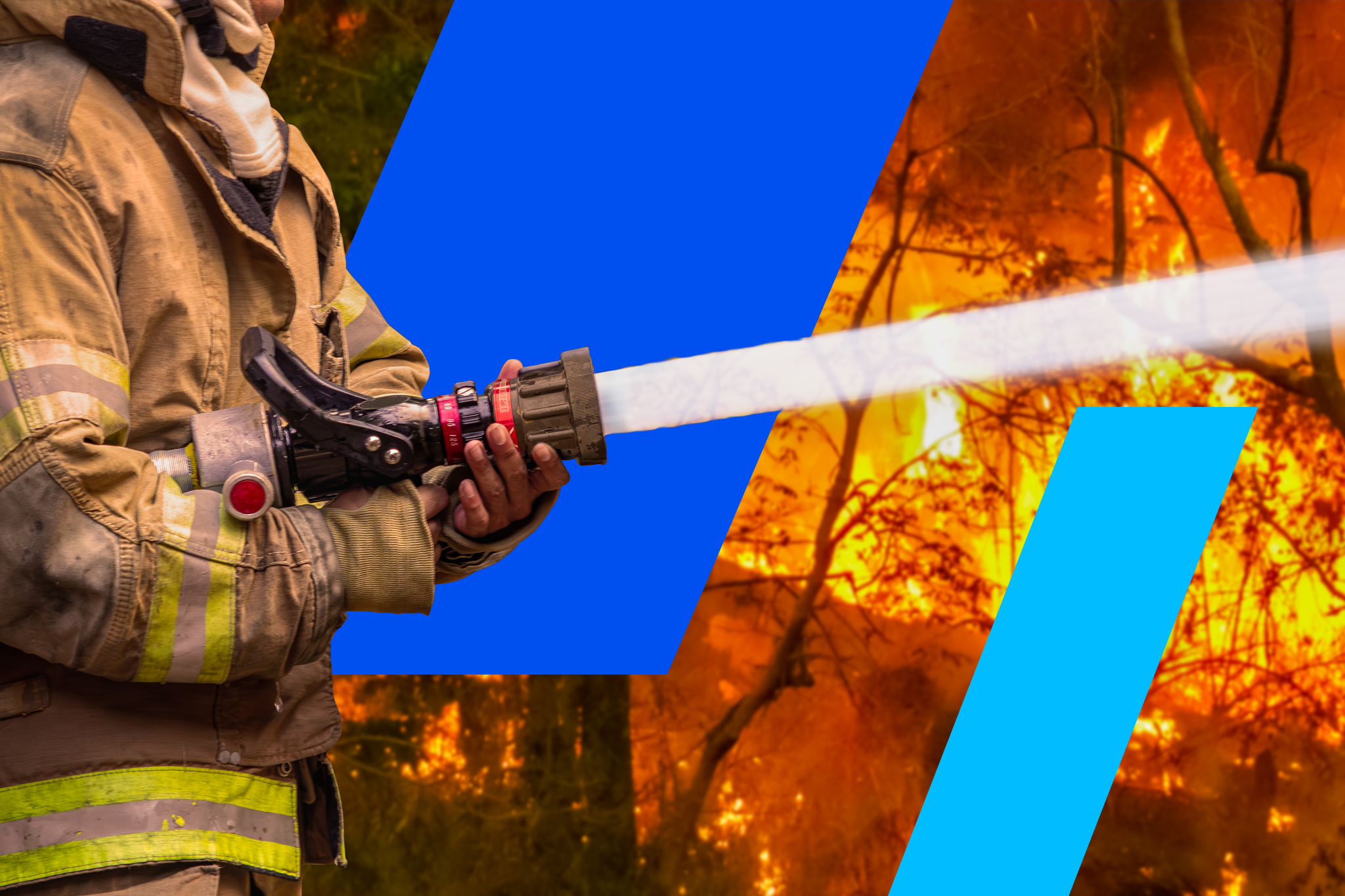Halloween is a time of excitement and celebration, with communities coming together to enjoy spooky festivities. However, along with the fun comes various safety risks that property owners should be aware of. The National Fire Protection Association reports that decorations are the first items ignited in an estimated average of 800 home fires annually.
This guide explores key safety concerns during Halloween, provides practical tips to minimize risks, and discusses how proper insurance coverage can protect property owners from potential liabilities and damage claims.
Children are more than twice as likely to be hit by a car on Halloween than on any other day of the year.
National Safety Council
Introduction
As Halloween approaches, property owners often focus on decorating their homes and preparing for the influx of visitors, particularly trick-or-treaters. The holiday is a blend of fun and frights, but it’s important to recognize the potential risks that accompany the festivities. From accidents on your property to damage caused by decorations or vandalism, being vigilant is essential. Ensuring you have the right insurance coverage and taking proactive safety measures can help protect you and your property.
This comprehensive guide outlines common safety concerns associated with Halloween, offers tips on how to minimize these risks, and explains how insurance can play a critical role in protecting property owners.
Halloween Safety Concerns for Property Owners
Trick-or-Treater Injuries
Property owners are responsible for maintaining a safe environment for all visitors, including trick-or-treaters. Common injuries can occur from:
Slips and Falls: Uneven walkways, slippery leaves, or poorly lit paths can cause visitors to trip and fall, potentially leading to injury. Children often wear costumes that limit their visibility or mobility, increasing the risk.
Decorations and Hazards: Halloween decorations like inflatables, cords, or wires can create tripping hazards if not properly secured. Decorations that obstruct walkways can also pose dangers.
Pets: Pets, particularly dogs, can become frightened or aggressive when encountering costumed visitors, increasing the risk of bites or other injuries.
Vandalism and Property Damage
Vandalism tends to increase during Halloween. Activities such as egging, toilet papering, smashing pumpkins, breaking windows, or graffiti can result in significant property damage. Homes with elaborate decorations or those left unattended are more susceptible.
Emotional Impact: Beyond financial costs, dealing with vandalism can be stressful and emotionally taxing for homeowners.
Fire Hazards
Halloween decorations can significantly increase the risk of fire. According to the National Fire Protection Association, decorations are the first items ignited in over 800 reported home fires each year.
Open Flames: Jack-o’-lanterns with real candles can easily ignite nearby decorations or costumes.
Electrical Decorations: Overloaded electrical outlets, frayed wires, or faulty lights can lead to electrical fires.
Flammable Materials: Synthetic decorations or costumes made from flammable materials pose additional risks.
Auto Accidents
With many children out on Halloween night, the risk of pedestrian accidents increases. Drivers must exercise extra caution, but property owners can also contribute to safety.
Obstructed Visibility: Decorations that block sidewalks or roadways can force pedestrians into the street, increasing the risk of accidents.
Poor Lighting: Dimly lit areas make it harder for drivers to see pedestrians.
Safety Tips for Property Owners
Ensure Safe Walkways and Entrances
Clear Walkways: Remove leaves, debris, and any obstacles from walkways and driveways.
Adequate Lighting: Use sufficient lighting to ensure visitors can see clearly. Consider using motion-sensor lights.
Secure Decorations: Properly secure any loose cords or decorations to prevent tripping hazards.
Signage: Place signs reminding visitors to watch their step or highlighting potential hazards.
Be Mindful of Decorations
Flame-Resistant Materials: Use decorations made of flame-resistant or non-combustible materials.
Safe Lighting: Opt for battery-operated candles or LED lights instead of real flames in jack-o’-lanterns.
Electrical Safety: Inspect electrical decorations for damaged wires or plugs before use. Avoid overloading outlets.
Placement: Keep decorations away from doorways, walkways, and flammable materials.
Secure Your Pets
Separate Spaces: Keep pets in a separate room or securely fenced area to prevent accidental bites or escapes when the doorbell rings.
Proper Identification: Ensure pets have up-to-date identification tags or microchips in case they escape.
Pet Safety: Avoid giving pets candy, especially chocolate, which can be harmful.
Reduce Vandalism Risk
Appear Occupied: If you plan to be away, leave lights on or use timers to make it appear as if someone is home.
Security Measures: Install security cameras or motion-sensor lights as deterrents.
Neighborhood Watch: Participate in or organize a neighborhood watch during Halloween.
Community Engagement
Communication: Talk with neighbors about safety plans and any concerns. A cohesive community can enhance overall safety.
Driver Awareness: Encourage safe driving by placing signs reminding drivers to slow down and watch for children.
Organize Patrols: Collaborate with local authorities or community groups to organize neighborhood patrols.
Insurance Coverage Considerations
Property insurance, such as homeowners and renters policies, can protect property owners from many risks associated with Halloween. Here’s how:
Liability Coverage
If a trick-or-treater or visitor is injured on your property, your homeowners or renters insurance policy typically includes liability coverage. This coverage can help pay for medical expenses, legal fees, and settlements if you are sued for the injury.
Scenario Example: If a visitor trips over an unseen decoration and breaks an arm, liability coverage can assist with medical costs and potential legal fees.
Policy Limits and Exclusions: Review your policy limits to ensure adequate coverage. Be aware of any exclusions or limitations, such as those related to intentional acts or certain types of injuries.
Umbrella Policies: Consider an umbrella policy for additional liability protection beyond standard coverage limits.
Property Damage
Homeowners insurance generally covers vandalism and property damage, including damage to the structure of your home and personal belongings.
Vandalism Claims: If your home is targeted by vandals—such as egging, graffiti, or broken windows—you can file a claim to cover repair costs.
Deductibles: Keep in mind that policies often have deductibles. Weigh the cost of repairs against your deductible before filing a claim.
Fire and Theft
If Halloween decorations or lights cause a fire resulting in damage to your home, homeowners insurance typically covers the cost of repairs.
Fire Damage: Coverage includes structural damage and may cover the replacement of personal belongings destroyed in the fire.
Theft Coverage: If valuable items are stolen during Halloween festivities, your policy may provide coverage. Check for any limits on high-value items.
Auto Insurance Considerations
If your vehicle is vandalized on Halloween, your auto insurance’s comprehensive coverage can help pay for repairs.
Comprehensive Coverage: This optional part of an auto insurance policy covers damage from events other than collisions, such as vandalism, weather, or theft.
Importance Beyond Halloween: Comprehensive coverage protects against a variety of risks year-round, not just during Halloween.
Reporting Vandalism: If your vehicle is vandalized, file a police report promptly and contact your insurance provider to start a claim.
What to Do If an Incident Occurs
In the event of an incident on your property, taking immediate and appropriate action is crucial.
Ensure Safety
Attend to Injuries: Provide first aid if necessary and call emergency services for serious injuries.
Prevent Further Harm: Address any immediate hazards to prevent additional incidents.
Document the Incident
Photos and Videos: Take clear photos or videos of the scene, including any injuries or property damage.
Written Accounts: Write down a detailed account of what happened, including dates, times, and witness information.
Contact Authorities
Police Report: For vandalism, theft, or severe incidents, file a police report.
Fire Department: If a fire occurs, ensure the fire department is notified, even if the fire is extinguished.
Notify Your Insurance Provider
Timely Reporting: Contact your insurance company as soon as possible to report the incident.
Provide Documentation: Share all relevant information and documentation to support your claim.
Conclusion
Halloween is a fun and festive time, but it comes with its share of risks for property owners. By taking proactive safety measures—such as clearing walkways, securing decorations, ensuring proper lighting, and engaging with your community—you can significantly reduce the likelihood of accidents and injuries on your property.
Reviewing your homeowners or renters insurance policy ensures you have adequate coverage, providing peace of mind against potential damages or liabilities. Consider scheduling an annual meeting with your insurance agent to discuss your coverage needs, especially before holidays like Halloween.
Proactive measures not only safeguard your property but also contribute to a safer community environment. By being prepared and mindful, you can enjoy a safe and worry-free Halloween while protecting yourself and your property from unexpected incidents.
Recommendations
Create a Halloween Safety Checklist: Based on the tips provided, make a checklist to ensure you’ve covered all safety aspects.
Review Insurance Policies Annually: Schedule a yearly review of your homeowners, renters, and auto insurance policies to ensure adequate coverage.
Consider Additional Coverage: If vandalism or liability is a concern in your area, consider adding comprehensive coverage to your auto insurance and an umbrella policy for extra liability protection.
Engage with Your Community: Participate in neighborhood safety initiatives to enhance security for everyone.
By balancing safety measures and appropriate insurance coverage, you can make Halloween a stress-free and enjoyable experience for yourself and your community.
Disclaimer
This guide is intended for educational purposes and should not be considered legal or professional advice. Insurance policies vary, and coverage may differ based on individual circumstances and providers. For specific questions about your insurance policy, please consult with your insurance provider or a licensed insurance agent. Always consult professionals for personalized guidance tailored to your situation.
Dorothea Dowling
Senior Vice President, Personal Lines
Hello, I’m Dorothea Dowling, Senior Vice President, Personal Lines and National Practice Group Leader at Axis Insurance. With 15 years of industry experience, my expertise lies in safeguarding high-value properties and assets, including hard-to-place properties like equestrian facilities. I’ve been recognized as a finalist for prestigious industry awards, like Business Magazine’s Young Achiever of the Year and IBABC PL Broker of the Year, and have a track record of delivering tailored solutions that enable clients to embrace risk and drive success.
Learn more


